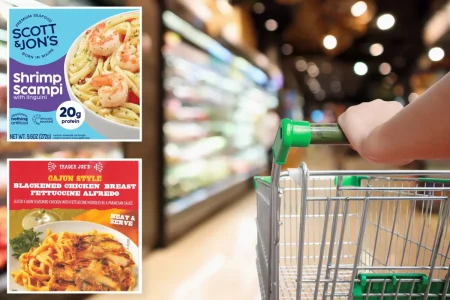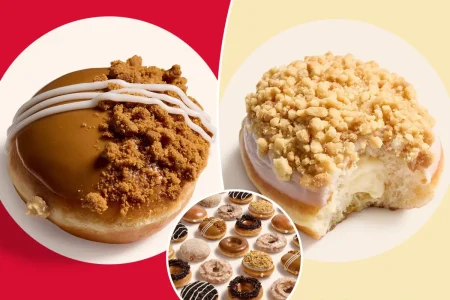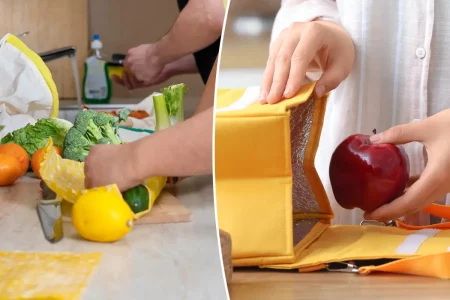Fall’s ‘Great Lock-In’: A Fresh Start Before the New Year
As autumn leaves begin to fall, a new wellness movement is taking root across social media platforms. Dubbed the “Great Lock-In,” this trend encourages people to harness the natural slowdown of fall to establish healthier routines and reset their lives before the holiday chaos begins. Unlike traditional New Year’s resolutions that often fizzle out by February, the Great Lock-In leverages the seasonal transition to build sustainable habits that can carry through winter’s challenges. Experts agree that this timing offers a unique psychological advantage: the opportunity to establish routines when energy is still high but the pace of life has begun to decelerate.
The journey begins with clear intention-setting, according to Laurie Singer, a licensed psychotherapist and behavior analyst from California. “The act of achieving a goal, no matter how small, propels us forward,” she explains. Rather than aiming for dramatic transformations, Singer advocates starting with “small, attainable and realistic goals” that can be checked off a weekly task list. These might be as simple as taking a brief morning walk, eating a nutritious breakfast, or documenting one positive experience each day. The physical act of checking these items off creates tangible evidence of progress, generating positive feelings that build confidence and momentum. This approach acknowledges our human need for regular reinforcement, creating a cycle where small wins fuel the motivation for continued effort.
Perfectionism is the enemy of sustainable change, warns registered dietitian Lauren Harris-Pincus. She offers perspective by noting that “only 10% of Americans eat the recommended amount of fruit and veggies per day,” suggesting that simply “adding one serving of produce per meal” represents meaningful progress. The key is consistency over intensity, focusing on improvements rather than flawless execution. “We are all human. Life happens, and it’s important to give ourselves grace when it comes to our own self-judgment and evaluation of success,” Harris-Pincus emphasizes. This compassionate approach recognizes that setbacks aren’t failures but natural parts of the change process. By celebrating incremental improvements rather than demanding perfection, we create psychological safety that allows for experimentation and growth without the crushing weight of unrealistic expectations.
The experts unanimously caution against the “all or nothing” mindset that often derails wellness initiatives. Marc Santa Maria, vice president of group fitness at Crunch Fitness, warns that going “too hard too soon” frequently leads to burnout or injury. Instead, he recommends “meeting yourself where you are” with manageable commitments like two or three 30-minute sessions weekly, choosing activities that feel enjoyable rather than punishing. As fitness improves, Santa Maria suggests gradually increasing challenge while building in accountability through social connections, shared goals, or small rewards. Singer reinforces this measured approach, noting, “I see many people give up on their plans because they’re only focused on the goal and not the process. We have to walk before we run.” This wisdom acknowledges that sustainable transformation requires patience and progressive adaptation rather than radical overnight change.
Anchoring new habits in daily life requires thoughtful integration rather than wholesale disruption. Harris-Pincus recommends selecting a single nutrition habit, like meal prepping or adding protein-rich beans to your diet, rather than attempting a complete dietary overhaul. These small shifts, compounded over months, deliver meaningful results while remaining manageable when life inevitably throws curveballs. “Life sometimes interferes,” she acknowledges. “We get sick, go on vacation or end up behind on a work deadline that overtakes our meal prep time. The key is to swing back to your routine as soon as you are able.” Santa Maria echoes this practical approach for fitness, suggesting scheduling workouts like appointments and changing your phone background to an inspiring image as a visual reminder. He also emphasizes that sufficient, consistent sleep provides foundational support for physical recovery and overall wellness. For mental restoration, Singer advocates daily micro-breaks—just three to five minutes to breathe, reflect, or document something positive—creating small oases of calm within busy days.
The ultimate measure of the Great Lock-In’s success isn’t how rigorously you adhere to autumn’s goals but how seamlessly these habits integrate into your life beyond the season. Harris-Pincus notes that the ideal outcome is for new behaviors to become so natural they’re simply “part of your daily life” rather than conscious efforts requiring willpower. Singer suggests that social connections provide powerful reinforcement for maintaining new patterns: “If you’re interested in healthier eating, consider signing up for a cooking class. If you’ve embraced running, hiking or cycling, look for local clubs.” These communities offer both support and accountability while making healthier choices more enjoyable. Perhaps most importantly, Singer reminds us to “don’t stop engaging in the activities that brought you to where you are today.” This wisdom acknowledges that sustainable change builds upon what’s already working in our lives rather than requiring a complete reinvention. As fall’s Great Lock-In demonstrates, the path to lasting transformation often begins not with dramatic resolutions but with thoughtful adjustments that honor our current reality while gently steering toward a healthier future.















